Photocatalysis and environmental photochemistry group-Zhao Jincai
QQ Academic Group: 1092348845
Detailed
New principles and methods for photocatalytic degradation of pollutants
Low-concentration, high-toxicity, and hard-to-degrade organic pollutants are a new type of pollutant that is of great international concern and are difficult to handle with traditional technologies. Therefore, the establishment and development of new elimination principles and methods are important research topics in the field of environmental chemistry. One. Through long-term systematic research on visible light photocatalytic degradation of dye pollutants, the research group proposed and established a new principle of visible light photocatalytic reaction that is different from traditional ultraviolet photocatalysis, and provided a new way to realize visible light photocatalysis of wide band gap semiconductors. A series of visible light photocatalytic systems based on iron complexes can efficiently degrade organic pollutants under a wide range of pH under mild conditions; for light-resistant (all) halogenated pollutants that are difficult to oxidatively degrade, light based on proton-coupled electron transfer is constructed New system for catalytic reduction degradation.
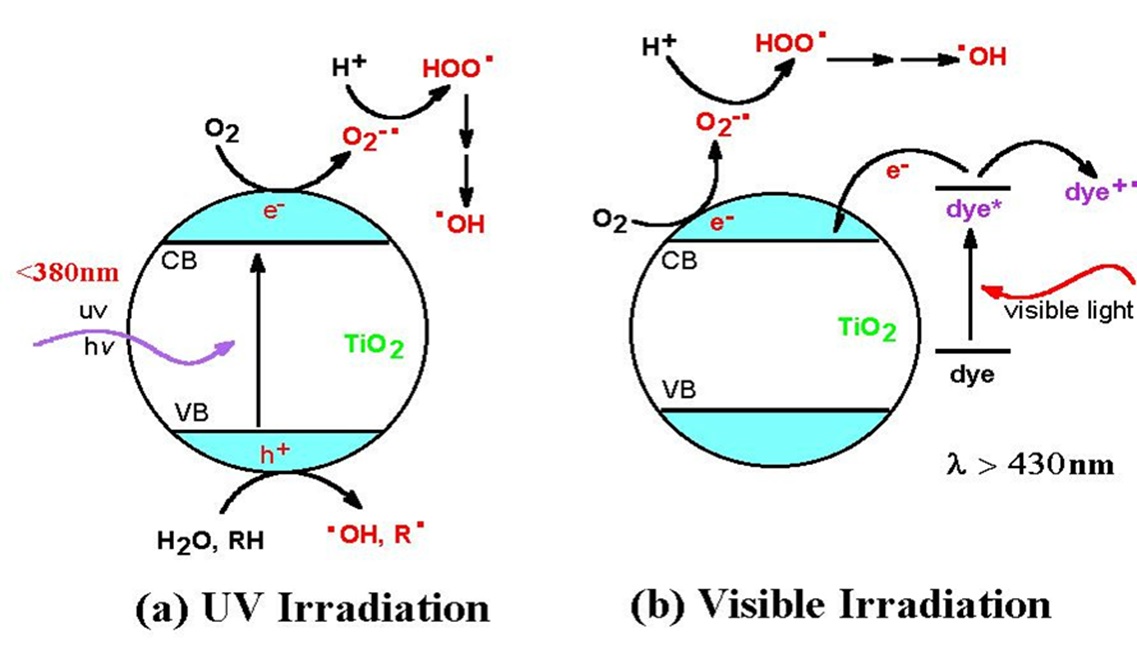
Visible light photocatalytic degradation of dye pollutants
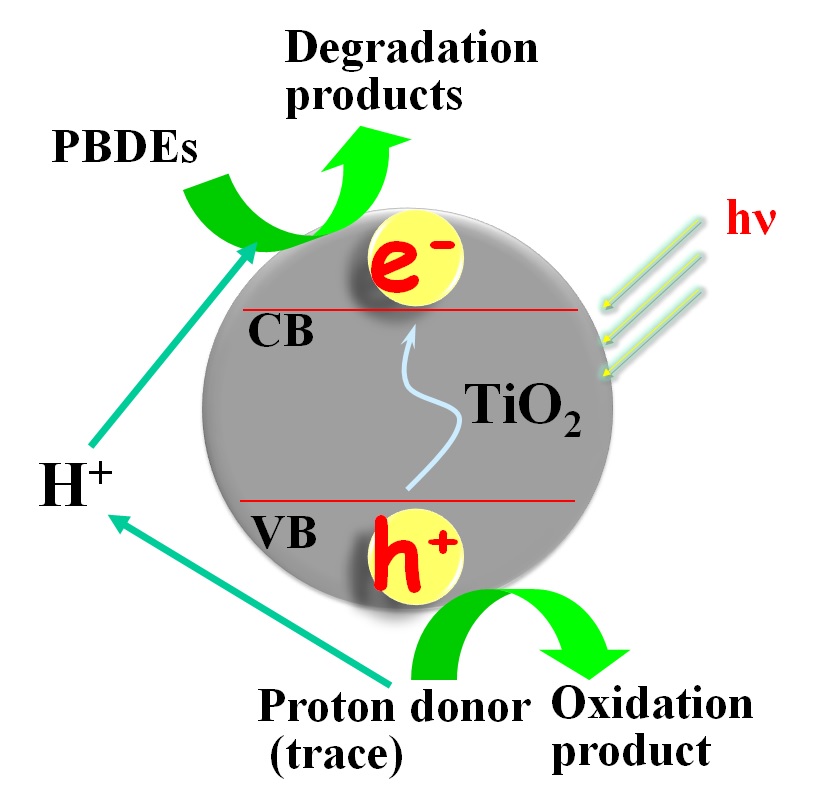
Photocatalytic reduction mechanism of proton coupled electron transfer
Photochemical processes on the surface of atmospheric particles
Atmospheric aerosol particles undergo complex physical and chemical changes in the atmospheric environment and affect global climate and air quality. The photochemical denitrification process of HNO 3 / NO 3 - on the surface of atmospheric aerosol particles is an important atmospheric change process. The denitrification process releases HONO and NO X , and they are · OH O . 3 precursors, which will have a significant impact on the Earth‘s atmospheric oxidation and biological nitrogen cycle. The research group focused on the photochemical denitrification process of HNO 3 / NO 3 - on PM2.5 aerosols in Beijing. By collecting PM2.5 aerosol samples from April 2016 to April 2018 in Beijing, the research and analysis HNO on PM2.5 3 / NO 3 -photolysis released during the HONO HONO contribution to the atmosphere of unknown origin, the influence of environmental factors on the process. In addition, we study the mechanism PM2.5 denitrification occurs in the light, pointing out the different components including PM2.5 light-absorbing substance, a water-soluble inorganic salts, soluble organic acid HNO on PM2.5 . 3/ NO . 3 - light The role in the solution process.
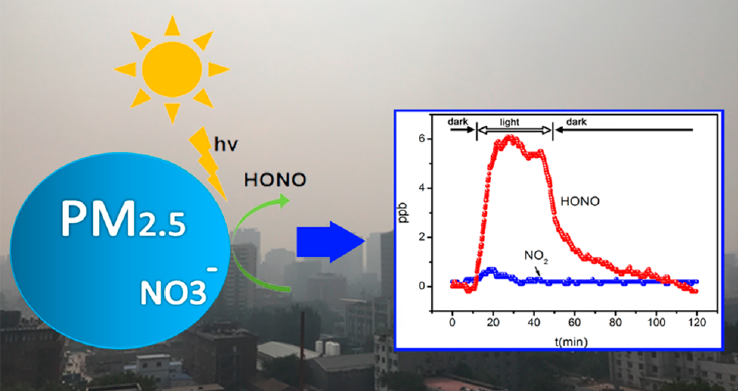
On the other hand, black carbon is produced from incomplete burning of fossil fuels and biomass, and is an important component of atmospheric sol. Once the black carbon is released into the atmosphere, it will interact with the inorganic and physical substances in the atmosphere, aging process itself, and then affect its environmental effects. The heterogeneous photochemical reaction between black carbon and O 2 in air is an important way for photochemical aging of black carbon. The research group used in situ attenuated total reflection infrared, Fourier-transformed ion cyclotron resonance mass spectrometry, and electron paramagnetic resonance to study the heterogeneous photochemical reaction of black carbon and O 2 through heterogeneous photochemical reactions Changes, molecular composition, and generation of reactive oxygen species, revealed changes in the black carbon group, molecular composition, and production of reactive oxygen species, revealed changes in the black carbon groups, molecular composition, and production of reactive oxygen species, revealed that The mechanism of heterogeneous photochemical aging and its impact on the environment.
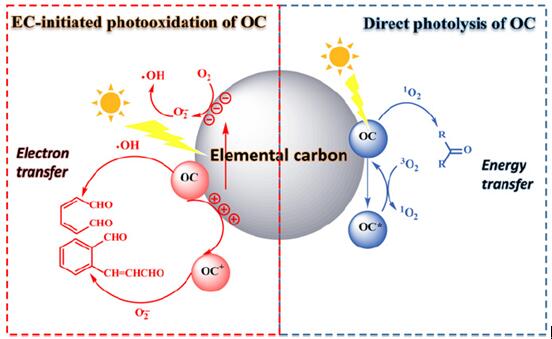
New environmental nanomaterials and nanophotocatalysis
Photocatalytic degradation of toxic organic pollutants using TiO 2 is currently a research area of great international interest, but TiO 2can only absorb ultraviolet light with a wavelength less than 387 nm, and has no photocatalytic activity under visible light irradiation. Because only less than 4% of the sunlight‘s light energy is ultraviolet light, and artificial ultraviolet light sources have the disadvantages of high power consumption, expensive equipment, and poor stability, a new photocatalyst has been developed to enable it to absorb visible light from sunlight. Oxygen in the air as an oxidant, effectively degrading toxic organic pollutants has become a key scientific problem in the field of photocatalysis. The research direction mainly includes two types of new photocatalytic materials based on TiO 2 modification and modification and visible light photocatalytic materials based on metal complexes. For example, the research team successfully developed a new visible light photocatalyst Ni 2 O 3 / TiO 2-x B x by using a simple sol-gel (Sol-Gel) method . Replacing part of the oxygen in the TiO 2 lattice with the non-metal element B can effectively extend the absorption spectrum of TiO 2 into the visible light region, and at the same time , the surface modification of TiO 2 with the transition metal oxide Ni 2 O 3 can greatly improve Visible light photocatalytic activity. Non-metallic element B or Ni 2 O 3The single-component modified photocatalysts do not have visible light photocatalytic activity, and the binary cooperative modification achieves the dual purposes of extending the absorption wavelength of the photocatalyst to the visible light region and inhibiting hole / electron pair recombination. The photocatalyst can effectively degrade toxic organic pollutants 2,4,6-trichlorophenol, 2,4-dichlorophenol, etc. under the irradiation of visible light (wavelength greater than 420nm) with oxygen molecules in the air as an oxidant. Carbon dioxide, water and chloride.
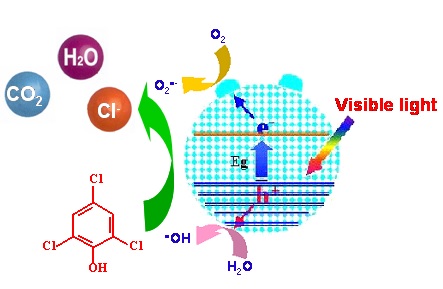
Novel visible light photocatalyst ( Ni 2 O 3 / TiO 2-x B x ) and its degradation mechanism
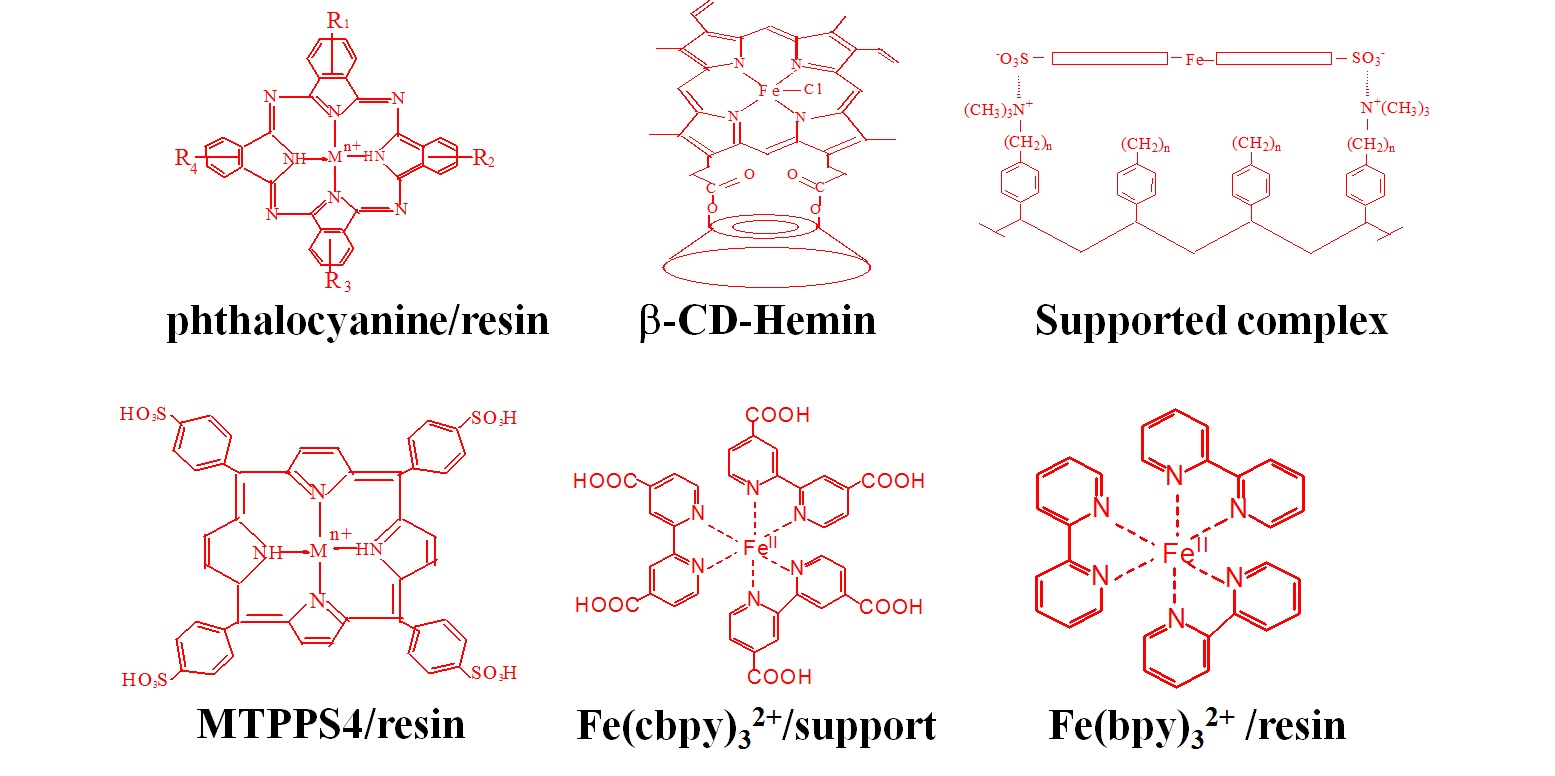
Series Fe complex visible light photocatalytic material
New method and principle of photochemical detection of trace pollutants
A series of new fluorescence and photoconductivity detection methods based on self-assembled one-dimensional organic nanomaterials were constructed and applied to the detection of trace toxic and harmful gas-phase target molecules and heavy metal ions. The core of the research includes molecular design of building units with molecular recognition functions and supramolecular self-assembly to construct organic nanomaterials with high fluorescence emission efficiency and photoconductivity. Compared with traditional polymer film sensing materials, the sensitivity of the constructed fluorescent organic nano-sensing materials to toxic and harmful gas-phase molecules including various organic amines (such as aniline), nitroaromatic compounds, and phenol is improved by several orders of magnitude. The same principle has also been successfully applied to the superselective detection of heavy metal mercury ions. The pioneering photoconductivity detection method uses the sensitivity of light-induced charge separation and transmission at the interface between pollutant molecules and sensing materials to selectively detect specific different molecules in similar pollutants.

One-dimensional fluorescent organic nanomaterials with high sensitivity and high selectivity for the detection of organic amine vapors
Photocatalytic green organic synthesis
Photocatalytic selective organic synthesis has received more and more attention in recent years due to its mild conditions, greenness, and the use of solar energy. By selecting suitable substrate molecules and solvent fire reactor photocatalysts for design modification, we can obtain a high degree of selectivity. The research team has recently achieved the selective synthesis of corresponding aldehydes, ketones, and imines from alcohols and amines. An important breakthrough was made, and an in-depth study of the reaction mechanism involving O 2 was conducted.

TiO 2 photocatalytic oxidation of primary amines to corresponding imines
- Previous: Next-generation nanote
- Next: A Rising 2D Star: Nove


 Academic Frontier
Academic Frontier
